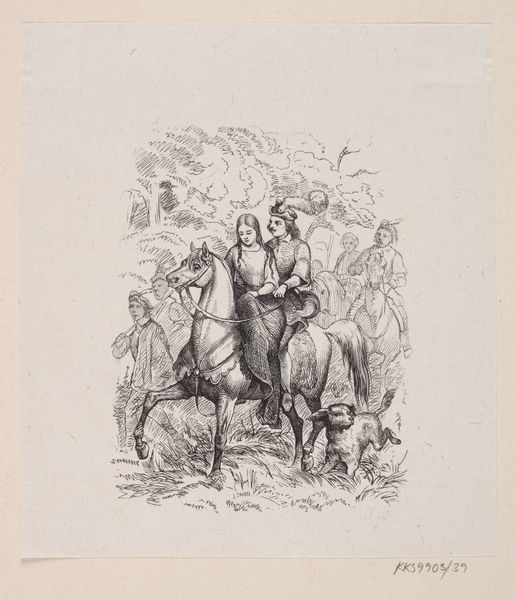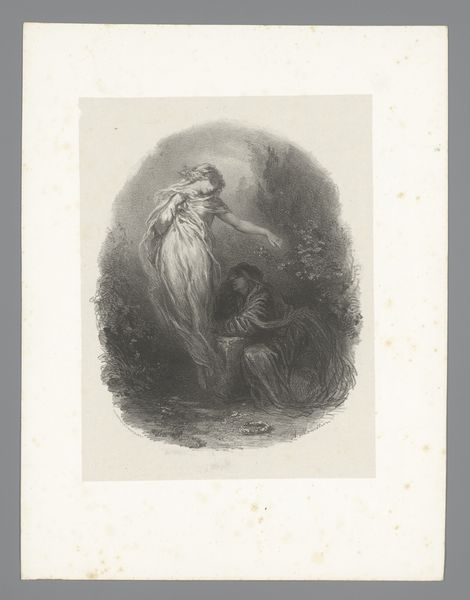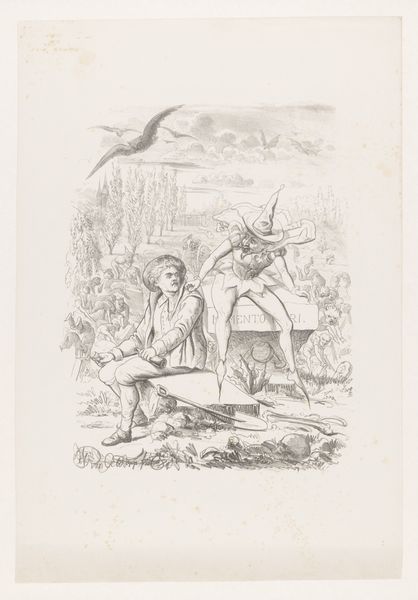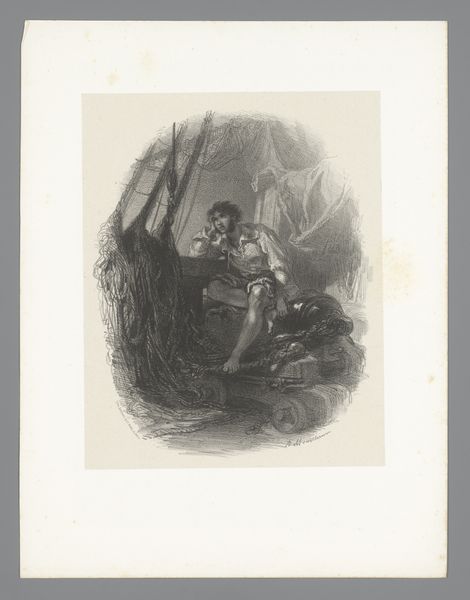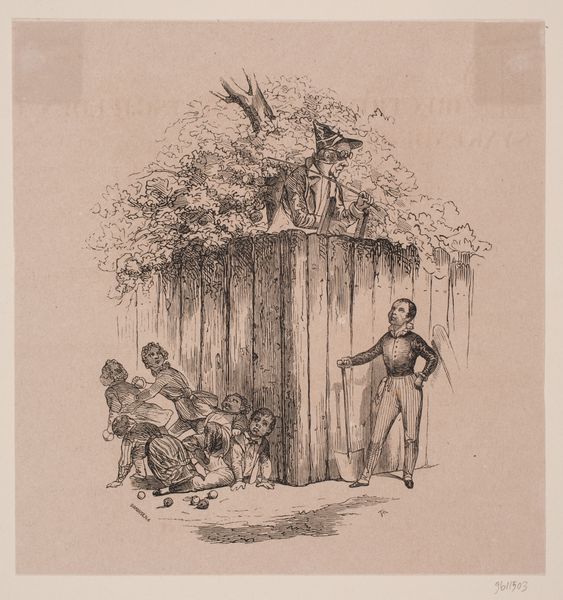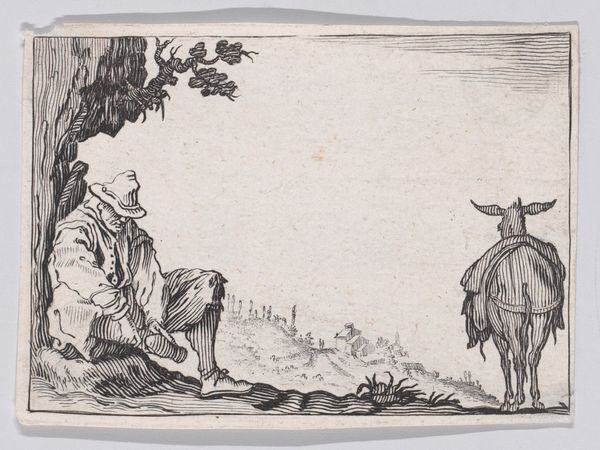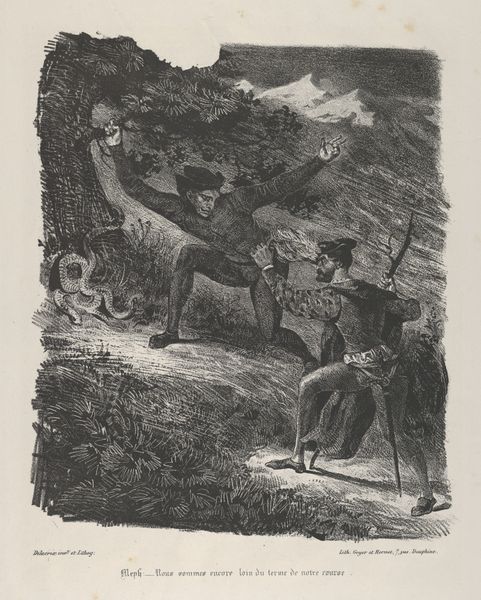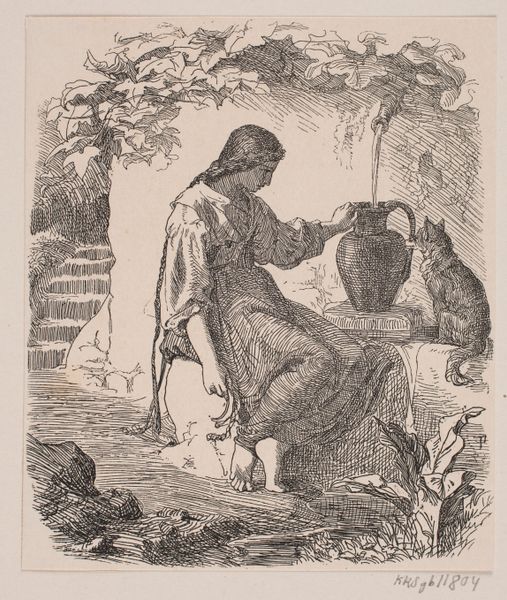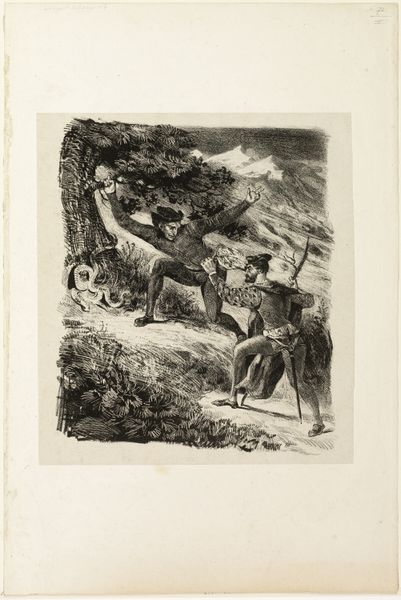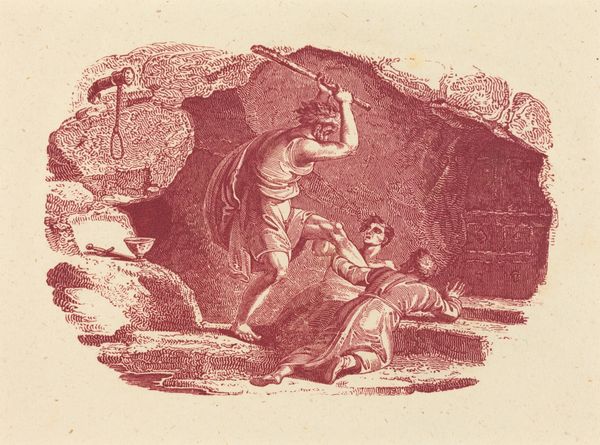
Illustration til "Den lille Havfrue" i H.C. Andersen, "Eventyr og Historier", Bind 1 1870 - 1873
0:00
0:00
Dimensions: 145 mm (height) x 118 mm (width) (bladmaal)
Editor: Here we have H.P. Hansen's Illustration for "The Little Mermaid" from H.C. Andersen's "Fairy Tales and Stories," created between 1870 and 1873. It's an ink and pencil drawing, fairly small, depicting the iconic meeting of the mermaid and the prince. The atmosphere feels quite melancholic. How do you read this image through a historical lens? Curator: It's fascinating to consider this illustration in the context of its time. Fairy tales, particularly those of Andersen, gained immense popularity in the 19th century, becoming deeply ingrained in national identities. Hansen's image contributed to this phenomenon, shaping how audiences envisioned these narratives. Notice the stark contrast between the human figure, rendered with classical lines, and the mermaid, partially obscured and more intimately tied to the natural world. What might this visual disparity suggest? Editor: Perhaps it’s about the irreconcilable differences between their worlds? The human is in the light, idealized, while the mermaid is literally in the shadows. Curator: Exactly. Furthermore, this image can be read as part of a broader socio-political discussion about gender and societal roles prevalent during this era. How might the portrayal of the mermaid, silent and yearning, reflect the constraints placed upon women in 19th-century society? Also, consider the public role of such illustrations: circulating narratives, moral frameworks, and shaping cultural values across various strata of society. Editor: That’s a compelling interpretation. I never considered the societal implications within a simple illustration. Curator: Art doesn't exist in a vacuum. The politics of imagery is always at play. Examining artwork this way unveils its multi-layered meanings and its power to shape and reflect culture. Editor: I appreciate that perspective; it has shifted my approach to interpreting narrative art. Curator: And I appreciate your insightful observations – these historical connections enrich our understanding and engagement with the art.
Comments
No comments
Be the first to comment and join the conversation on the ultimate creative platform.
